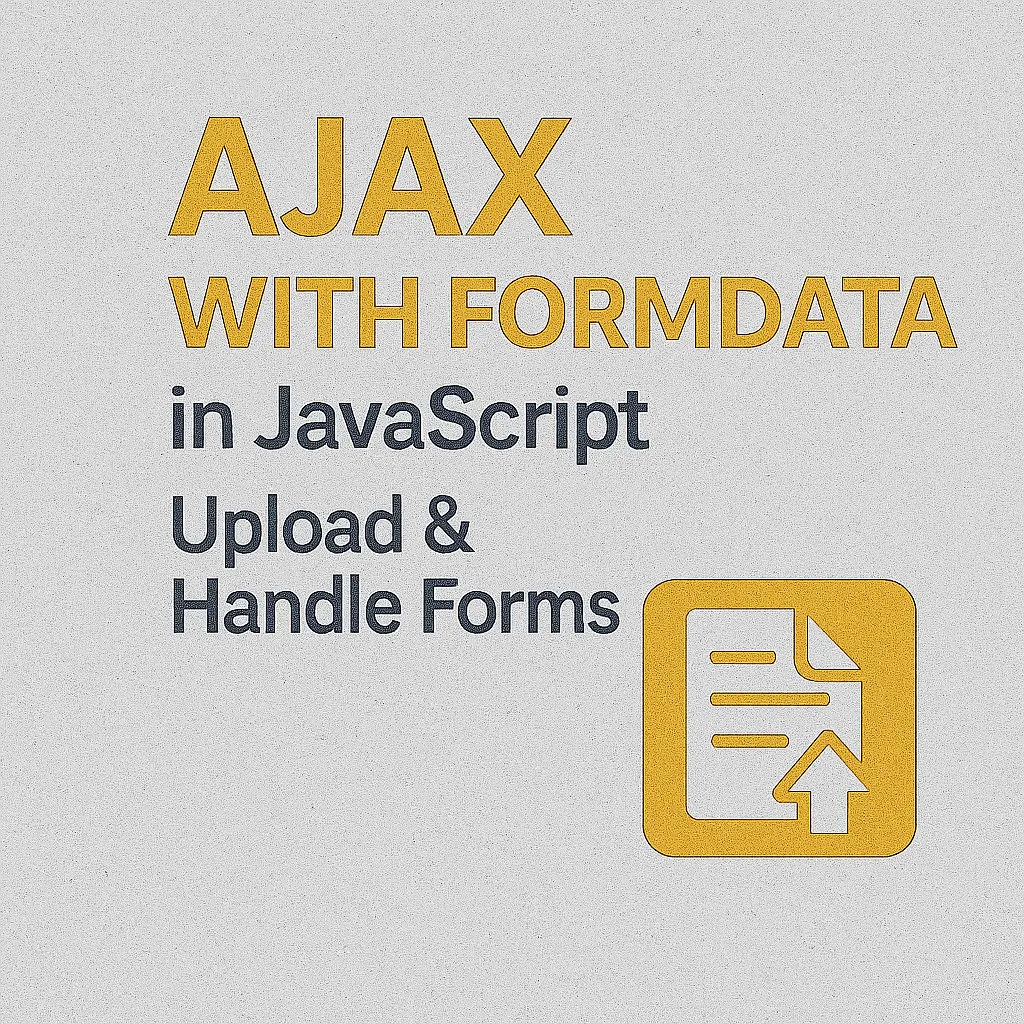Understanding AJAX with FormData
AJAX enables web developers to send and receive data from a server asynchronously without interfering with the current page. This is particularly useful for tasks such as form submissions, where you want to update parts of a page without reloading the entire content. FormData is a built-in JavaScript object that allows easy construction of key-value pairs representing form fields and their values. It’s commonly used to capture data from HTML forms and send it to the server via AJAX requests. Additionally, FormData provides methods for working with form data and handling file uploads seamlessly.Sending Form Data with AJAX
Let’s start with a basic example of sending form data using AJAX and FormData. Suppose we have an HTML form with id “myForm”:
<form id="myForm">
<input type="text" name="username" />
<input type="email" name="email" />
<button type="submit">Submit</button>
</form>
To handle the form submission asynchronously, we can use JavaScript:
const form = document.getElementById('myForm');
form.addEventListener('submit', function(event) {
event.preventDefault();
const formData = new FormData(form);
// Send form data using AJAX
fetch('submit.php', {
method: 'POST',
body: formData
})
.then(response => response.json())
.then(data => {
console.log('Response from server:', data);
})
.catch(error => {
console.error('Error:', error);
});
});
In this example, we prevent the default form submission behavior using event.preventDefault(), construct a FormData object from the form, and send it to the server using the fetch API.
Handling File Uploads with AJAX
File uploads are a common requirement in web applications, and FormData simplifies the process significantly. Let’s extend our previous example to include a file input field:
<form id="myForm">
<input type="text" name="username" />
<input type="email" name="email" />
<input type="file" name="file" />
<button type="submit">Submit</button>
</form>
Now, when the form is submitted, we can access the uploaded file on the server side. Here’s how you can handle file uploads with AJAX and FormData:
const form = document.getElementById('myForm');
form.addEventListener('submit', function(event) {
event.preventDefault();
const formData = new FormData(form);
// Send form data using AJAX
fetch('upload.php', {
method: 'POST',
body: formData
})
.then(response => response.json())
.then(data => {
console.log('Response from server:', data);
})
.catch(error => {
console.error('Error:', error);
});
});
FormData Object Methods and Properties
FormData provides various methods and properties for working with form data. Some of the most commonly used ones include:
append(name, value): Appends a new value onto an existing key inside a FormData object.
delete(name): Deletes a key/value pair from a FormData object.
get(name): Returns the first value associated with a given key from within a FormData object.
getAll(name): Returns all the values associated with a given key from within a FormData object.
has(name): Returns a boolean stating whether a FormData object contains a certain key.
set(name, value): Sets a new value for an existing key inside a FormData object, or adds the key/value if it does not exist.
These methods provide flexibility in manipulating form data before sending it to the server.
Conclusion
In conclusion, AJAX with FormData is a powerful combination for handling form submissions and file uploads asynchronously in web development. By leveraging the FormData object along with AJAX, developers can create dynamic and responsive web applications with ease. Understanding the methods and properties of FormData enhances the capabilities of handling form data effectively. So, next time you need to handle form submissions or file uploads on the web, remember the prowess of AJAX with FormData at your disposal.






